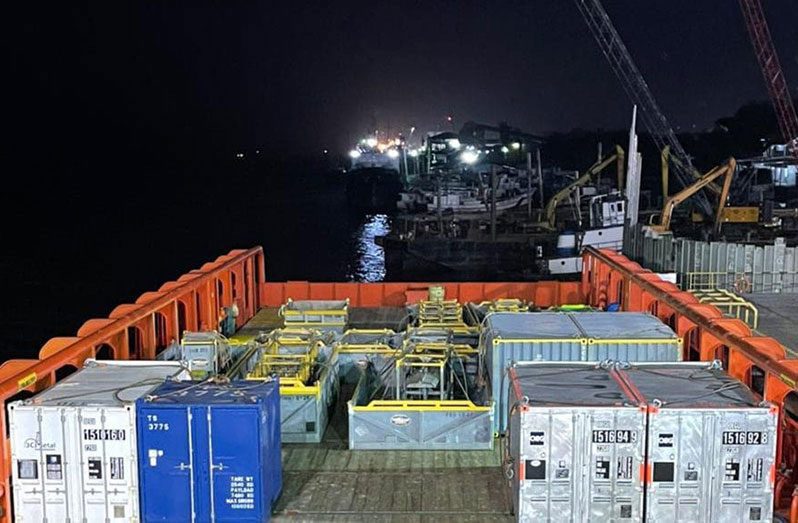EXXONMOBIL Guyana has confirmed that its offshore team has commenced reinstallation of the recently repaired and upgraded components of the flash gas compression system on the Liza Destiny Floating Production Storage and Offloading (FPSO) vessel.
Reports emanating from the oil company on Wednesday evening indicated that additional vibration and process monitoring specialists are also being mobilised to join the team offshore. These persons are currently undergoing the requisite testing and isolation at the COVID-19 staging facilities.
The compressor was damaged in January and resulted in the company having to temporarily increase gas-flaring above pilot levels in order to maintain safe operations. The faulty contraption was subsequently removed and sent to Germany for immediate repairs.
ExxonMobil’s Production Manager, Mike Ryan, had recently said that repairs were completed, and that the gas compressor should be completely installed and ready by the end of March 2021.
It was previously explained that in addition to the repairs on the existing equipment, an order has been placed for a new flash gas compressor, which will be available closer to the end of the year, given the complex nature of the equipment. ExxonMobil said on Wednesday that safety has remained its top priority throughout the process, and that it will take special care to maneuver these large pieces of equipment.
In relation to the flaring, ExxonMobil’s Country Manager, Alistair Routledge, had repeatedly emphasised that the current level of flaring is still within the limits of the permits and licences granted to ExxonMobil. “Let me assure you, we are very clear what are our obligations, our commitments under our permits, and licences for the operation of the project and we are certainly fully within those limits; we have not exceeded anything, any parameter, anything,” Routledge said. He added: “We have very same systems that enable us to track what are all those commitments and we are absolutely certain that we’re within those.”
The oil giant had indicated also, that production levels at its operations offshore Guyana have been reduced in order to accommodate the repair of the defective gas compressor. It was noted that the company continues to produce oil at 120,000 barrels per day, while the current daily levels of flaring are between 16 and 18 million cubic feet.
Ryan, however, noted that reducing production would not necessarily limit the amount of gas that is being flared. “In order for us to get back to pilot-flaring levels, we need that flash gas compressor or we need to reduce production to zero… that’s just a fact,” Ryan had explained.
Back in 2019, ExxonMobil had explained to the media that for the first period, after ‘first oil’, there would be initial start-up flaring, as authorised by the Environmental Protection Agency (EPA), which occurs during the commissioning and initial start-up phases of the FPSO when gas and liquids are introduced into new facilities and equipment. This flaring, it said, would not continue as a routine, and will only take place again in the case of an emergency, whereby flaring will be used to immediately de-pressurise the facility as part of a shut-down process to reduce risk.
Meanwhile, Executive Director of the Payne Institute for Earth Resources and Research, Professor of Public Policy at the Colorado School of Mines, Dr. Morgan Bazilian, had said that general regulatory and technical measures must be implemented to mitigate gas-flaring in future projects.
“Yes, flaring itself has environmental impacts, and is a waste of resources, economically and environmentally bad,” said Dr. Bazilian during a virtual session with local reporters in October 2020.
He further added that there are technical ways to reduce flaring, but there must be a combination of technical measures which will come in quickly, and regulatory measures. Most countries take “a long time” to develop a regulatory framework for gas-flaring, but from the expert’s understanding, the projects in Guyana are engineered to have zero routine flaring.
Dr. Bazilian pointed to the “Zero Routine Flaring by 2030” initiative introduced by the World Bank, which brings together governments, oil companies, and development institutions which recognise the dangers of flaring. According to the World Bank, this initiative pertains to ‘routine flaring’, and not to ‘flaring’ for safety reasons or non-routine flaring, which, nevertheless, should be minimised.
ExxonMobil has since said that it remains committed and focused on the quality of the work to ensure successful re-start of the flash gas compression system, which will lessen flaring, once fully operational.




.png)









